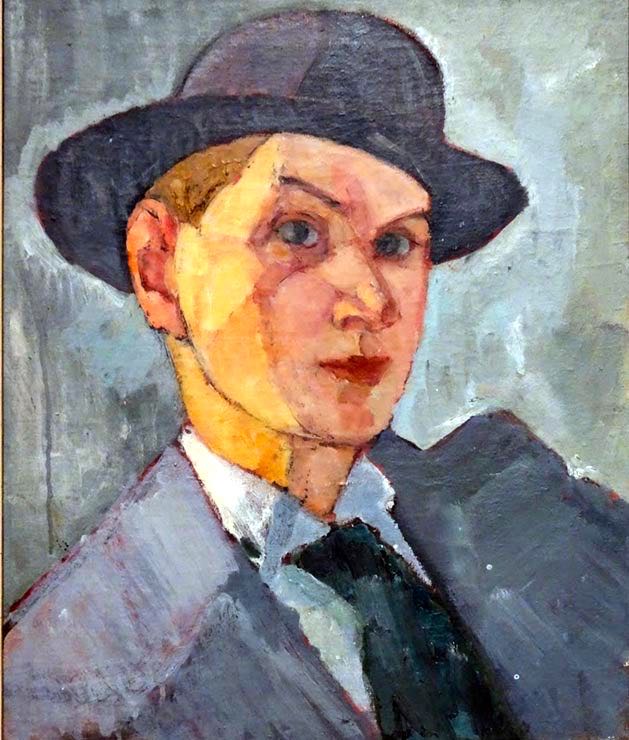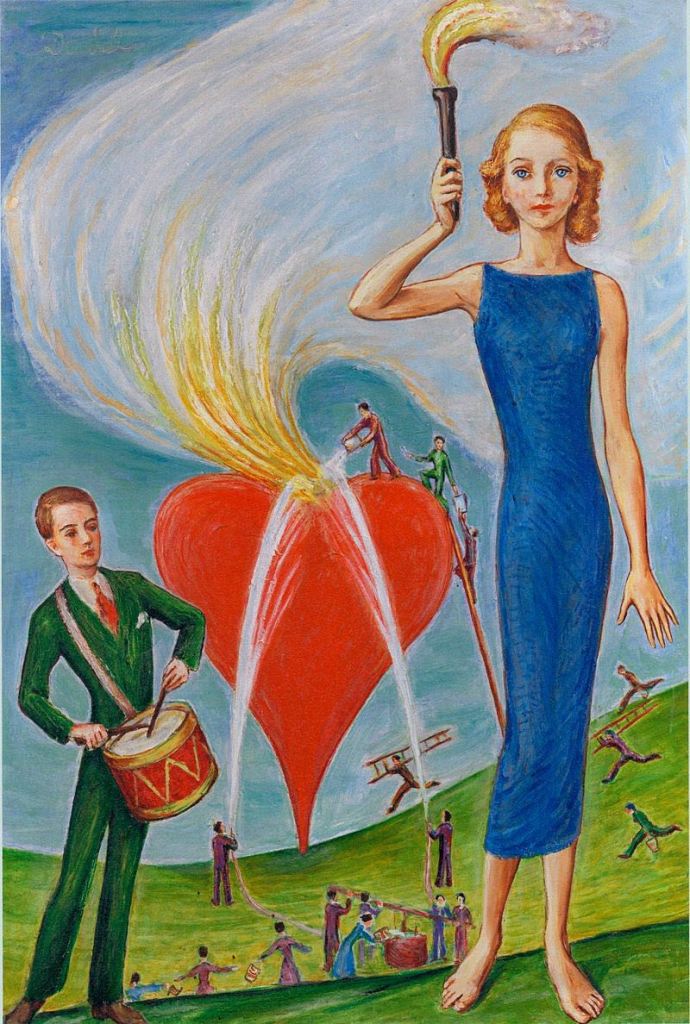
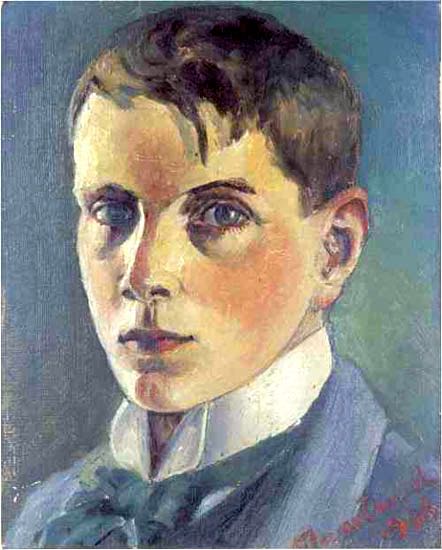
Net zoals menig ander Zweeds kunstenaar uit die tijd trekt hij al vlug, in 1910 naar Parijs waar hij vooral bij ‘Les Fauves’ en de Post-Impressionisten, als bij Japanse houtsnedes, inspiratie vindt. Hij verkent het Pointillisme, en leunt even bij het Cubisme aan. Hij zal hoofdzakelijk tot in 1939 in Frankrijk verblijven.
In 1912 ontmoet hij er, vriend, en zeggen we meteen lover: de rijke Zweedse diplomaat Rolf de Maré die ook zijn mecenas wordt. Hij adviseerde hem bij de uitbouw van zijn indrukwekkende Modernistische Kunstcollectie. In 1920 zal de Maré met zijn hulp de kortstondige maar legendarische ‘Ballets Suédois’ in Parijs creëren.
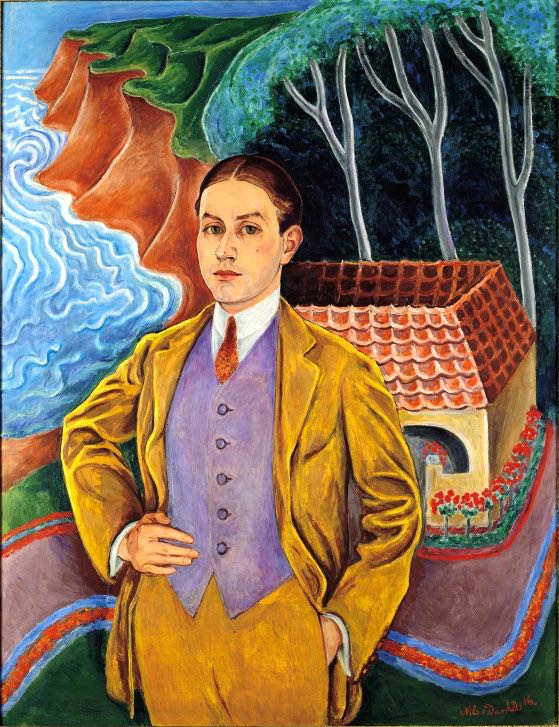
After a short sojourn at the Royal Academy of Fine Arts in Stockholm, Nils Dardel went to Paris in 1910, a city where he would spend a large part of his life. Here, he was hurled into an intense whirlwind of bars and cafes, where artists and collectors had lively discussions about astonishing new styles of art. Dardel became friends with the German Wilhelm Udhe (1874–1947), who was the cubist Pablo Picasso’s (1881–1973) art dealer and the one who discovered the naivist Henri Rousseau (1844–1910).
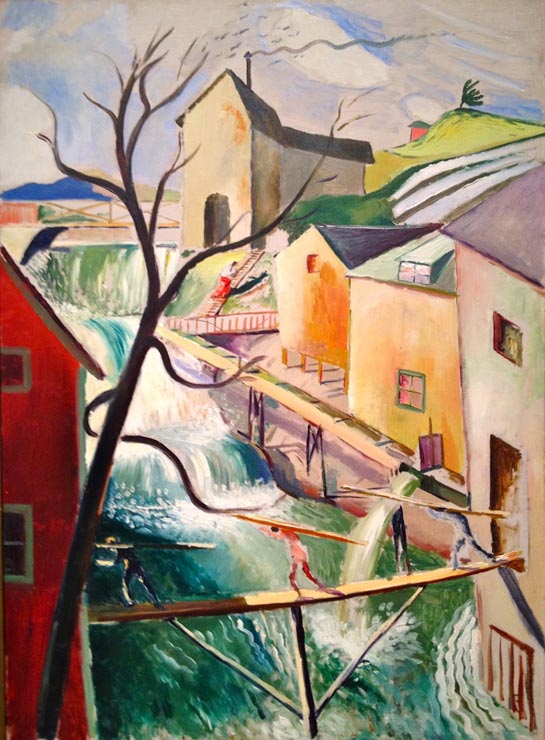
Udhe took Dardel to the mediaeval city of Senlis, where the artist tried his hand at cubism in Girl with Iron Ball and Rue Ville de Paris in Senlis, that is, he reduced his visual impressions to simple geometric shapes in a subtle grey scale. But this was just a short flirtation. In the idyllic community northeast of Paris, Dardel also painted Funeral in Senlis, hinting at the narrative, almost naivist style for which he soon became known. This painting captures the life of a small French town. The shimmering colours are applied in dabs, and the white choirboys contrast with the mourners dressed in black.

Europe changed radically in the early 20th century. The region was being massively industrialised and urbanised, and technology introduced entirely new means of spreading ideas and communicating over national boundaries. The fleeting, ephemeral modern life gave rise to a heightened sensitivity and restless mobility, which was expressed in modernist art. The avant-garde was constantly looking for what had never been seen, and new “isms” were born head to tail: cubism, futurism, orphism, rayonism.
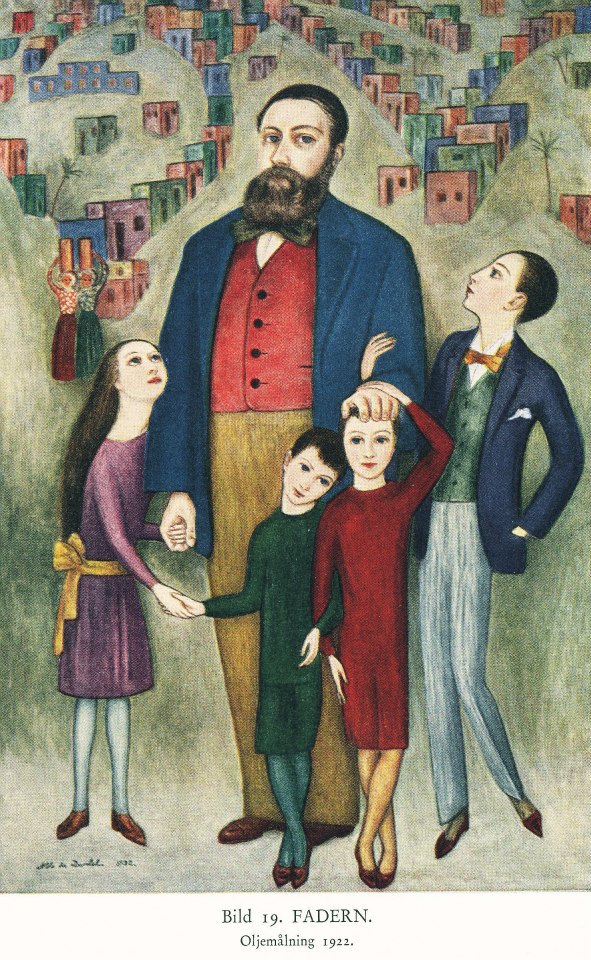
A compulsive traveler all his life, von Dardel was in Tokyo in 1917 when he met and became secretly engaged to Nita Wallenberg, the daughter of yet another diplomat; the engagement was broken two years later by her family on account of his scandalous lifestyle. In 1921 he married writer Thora Klinckowström. They had a daughter, Ingrid, but divorced in 1934. In 1930 he met another writer, Edita Morris. She was also married – and remained so – but they had a relationship (of exactly what nature I’ve been unable to ascertain) for the remainder of von Dardel’s life. He died of a heart attack in New York at the age of fifty-four and was buried in Ekerö cemetery outside of Stockholm.
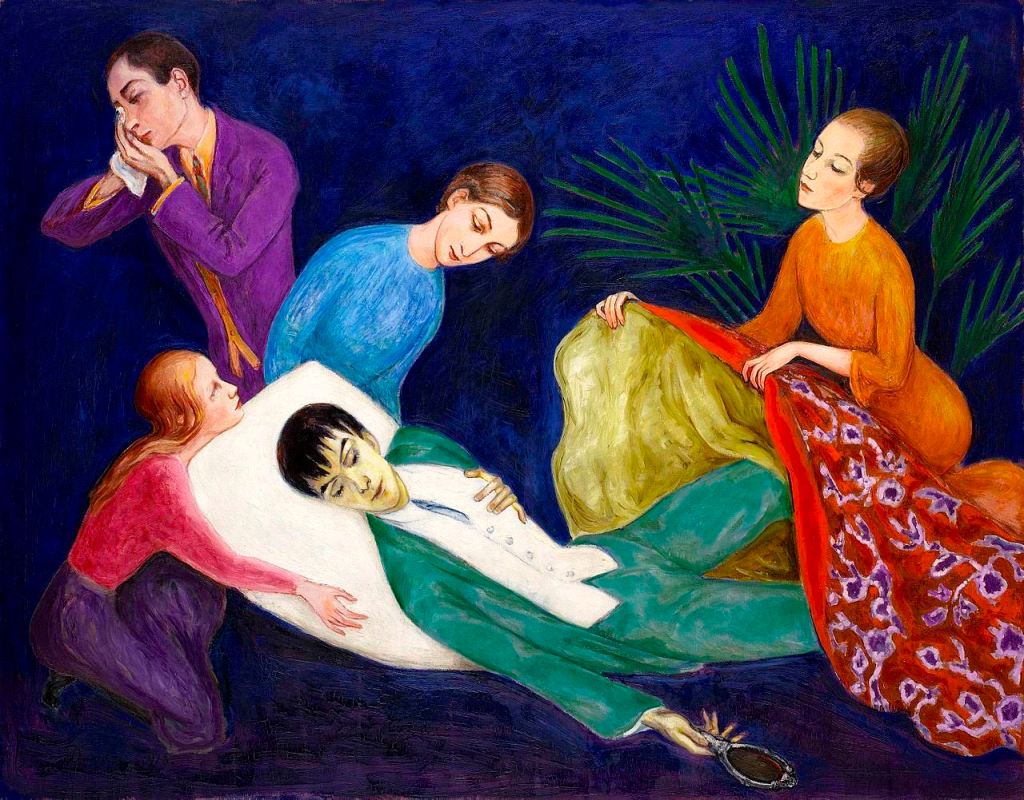
Nils Dardel is not, however, a pure modernist aesthetically. His works are in conflict with the times in which he lived, a modern age that was preoccupied with keeping up with the latest fashions and did not fully appreciate an artist who never quite embraced the avant-garde. Dardel had an old-fashioned way of using stories and myths to portray an ambivalence about being both seduced and outraged by the onslaught of modernism. His style is reminiscent of a mixture of naivism and late-19th century symbolism.

His private life became public in a way that nearly took over entirely, as if the “role” or “mythical figure” of Dardel stood in the way of the artist. It has been too tempting to link his pictures to his biography, basing the interpretation of his works on his life. His works are ambiguous; a seemingly banal and innocuous trait can suddenly swing into its diametrical opposite. Seriousness and irony co-exist, and many of his works have several parallel storylines. This parallelism also entails that the narratives in his works have multiple entry and exit points. This ambiguity is present equally in his person and his works. His is a dual nature that attracts and is attracted by both men and women.
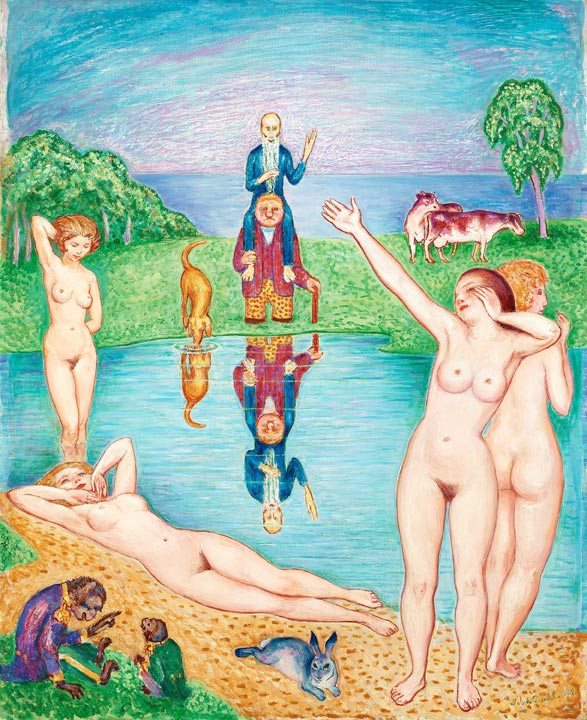
The often wild combination of laughter and tears, seriousness and madness that characterises Dardel’s art has a kinship with the dadaist and surrealist art circles in which Dardel moved, especially in Paris. In his works, he presents his private life and modern, independent individuals in a role play about identity and how it can be created and recreated. Like he created a persona for himself – the democratic dandy, says John Peter Nilsson, curator of the collection.
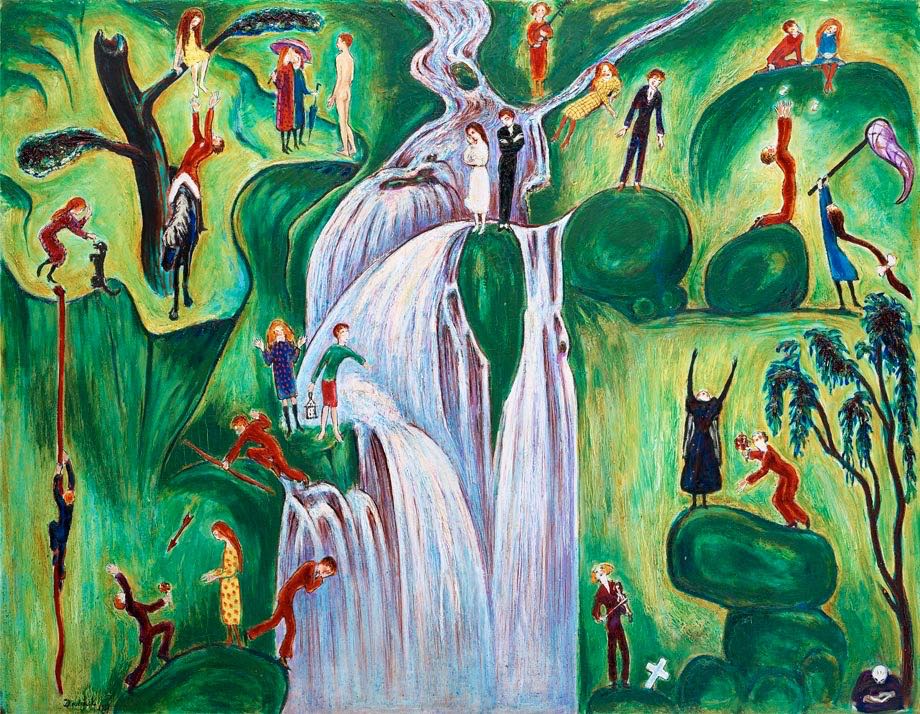
Karl Asplund called him a “man of opposites”. Could this ambiguity stem from a mindset typical of the early 20th century? I would claim that Nils Dardel is a modern artist – albeit not unequivocally a modernist. He is torn not only between an inner and outer reality, but also between tradition and regeneration. He never grapples with modernist formal experiments, with the exception of the period immediately after his time at the Academy, when he belonged to the group De Åtta (The Eight). On the contrary, his style is more reminiscent of a mixture of naivism and late-19th century symbolism. His sensitivity can also be interpreted as a status marker, according to Karin Johannisson, of the kind used by the upper classes during La belle époque to indicate that their nerves were finer and more delicate than those of other classes. But he fills his works with modern contents, especially when he blends fiction and fact, thereby expanding his oeuvre into a private mythology.
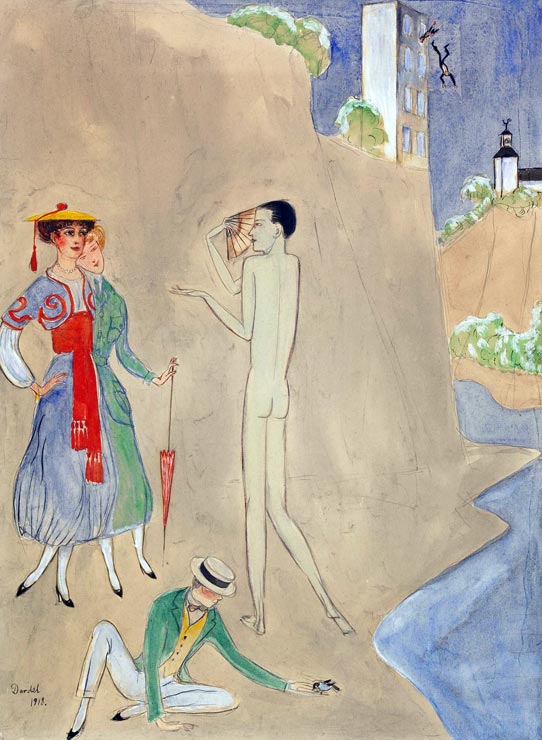
I am not convinced that Dardel’s works contain a secret language. The dual coding is of a more associative nature. It is a role play that broadly concerns how identities are created and recreated. Role play has been the fundamental basis of social psychology since the 1920s. In his seminal work The Presentation of Self in Everyday Life from 1959, Erving Goffman developed this concept by transferring metaphors from theatre, such as acting, costume, prop, script, setting and stage to social behaviours. It was no longer a privileged few who could play around with their image. As social media offer new opportunities for self-representation, role play has become available to more and more people.
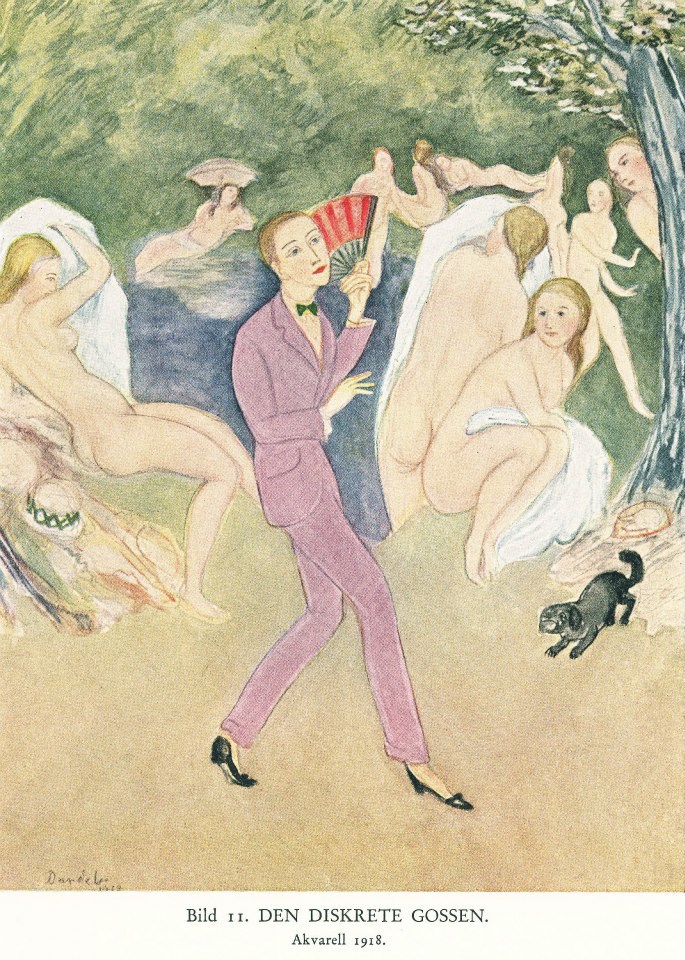
One of the clearest exponents of this development is probably David Bowie. His various enactments of himself form a rich patchwork of historical references that I, like the exhibition David Bowie is at the V&A in London (2013), dare say is a multi-performative work of art in its own right. In the exhibition catalogue, Camille Paglia provides a historical perspective on Bowie’s gender-transcending role play: “Bowie’s theatre of gender resembles the magic-lantern shows or phantasmagoria that preceded the development of motion-picture projection.” And she continues: “The multiplicity of his gender images was partly inspired by the rapid changes in modern art, which had begun with neoclassicism sweeping away rococo in the late eighteenth century and which reached a fever pitch before, during and after World War I.”
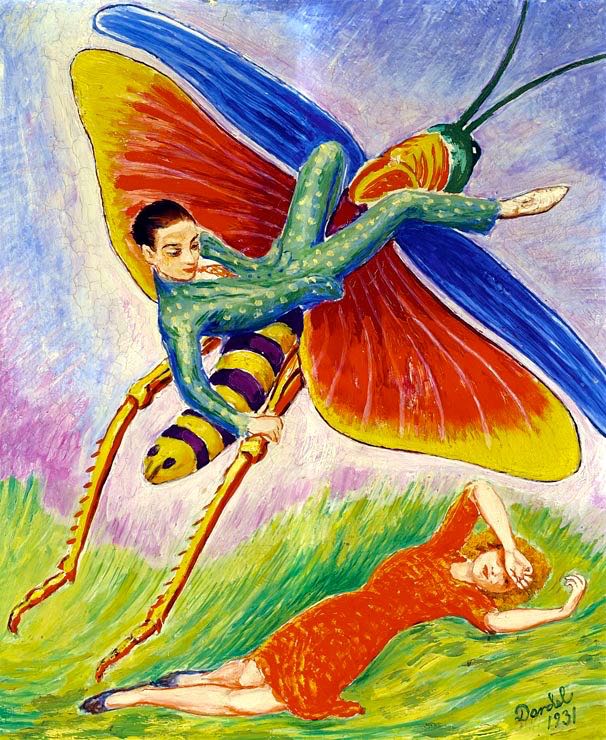
Paglia is referring to the milestones of dandyism, and Bowie himself claims to be deeply influenced by all art forms, but perhaps most of all by expressionism and dadaism. If we study Bowie and his array of personas, he was undeniably inspired by the radical and liberated art scene that prevailed around World War I. The same era shaped Nils Dardel’s boundary-crossing artistic oeuvre. Can’t you just see him standing in for the Thin White Duke!? (Text: John Peter Nilsson, curator)
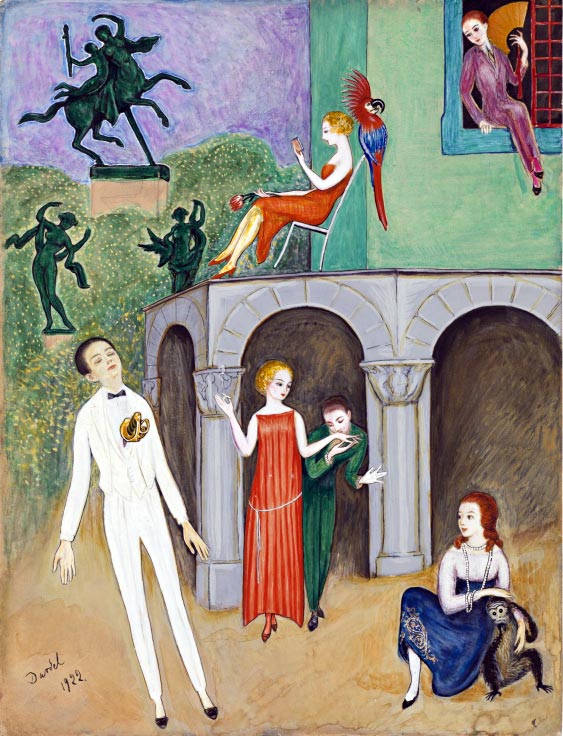
Een mooie vergelijking was dat, en ik heb geprobeerd ze aan te vullen met bovenstaande aquarel uit 1922. Anders dan de dandy die in de 19de eeuw op ‘eenzame hoogten’ de samenleving probeerde te bekritiseren door haar strevingen overduidelijk te benadrukken, is de ‘democratische dandy’ in ons allen aanwezig. Nils Dardel gebruikte een brede waaier van de voorhande liggende -ismen om het verhaal dat wij spelen tot ons verhaal te maken, de artistieke hoogten te laten voor wat ze zouden zijn, en de bevrijdende fantasie te verlossen uit haar vaak pretentieuze cenakels. Net zoals zijn fantasie kent ook zijn tederheid geen grenzen want ook spelend blijven we eenzame spelers die alleen op mededogen van de medespelers mogen rekenen.
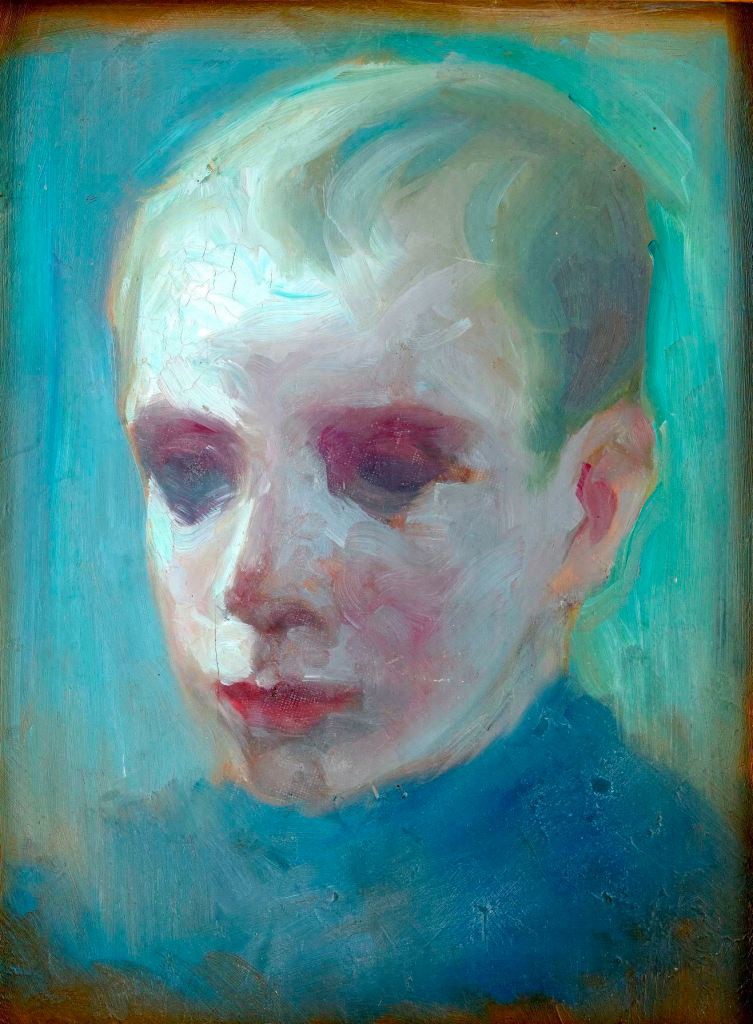
Boy’s head
http://dardel.info/famille/artistes/NilsDardel/NilsDardelE.php
NILS VON DARDEL, PEINTRE DE LA VIE ÉLÉGANTE
http://godsandfoolishgrandeur.blogspot.com/2019/07/the-brightly-lit-and-precious-dark.html
